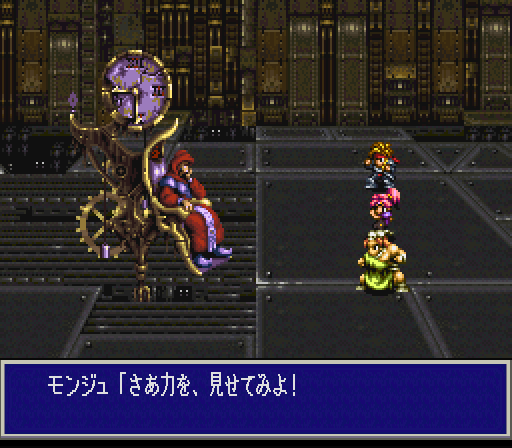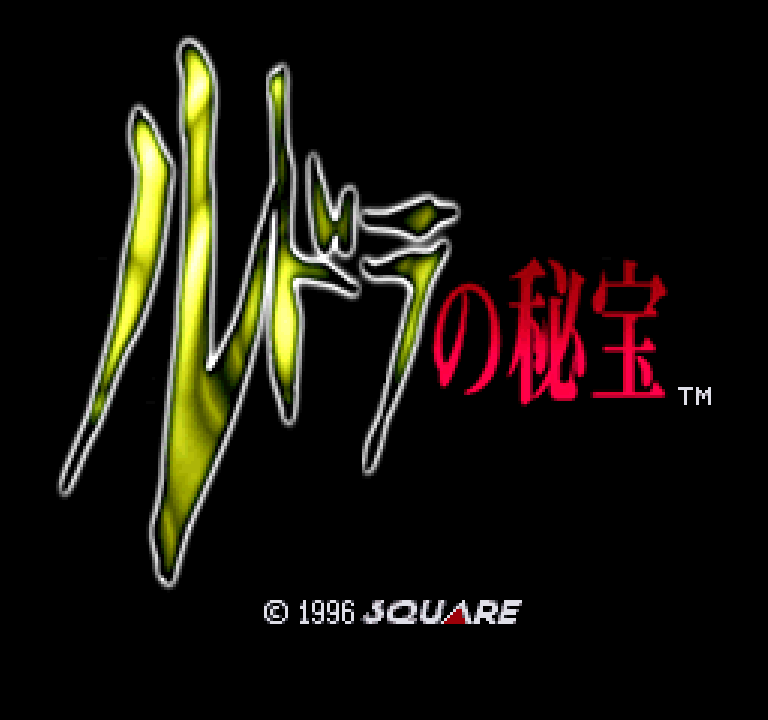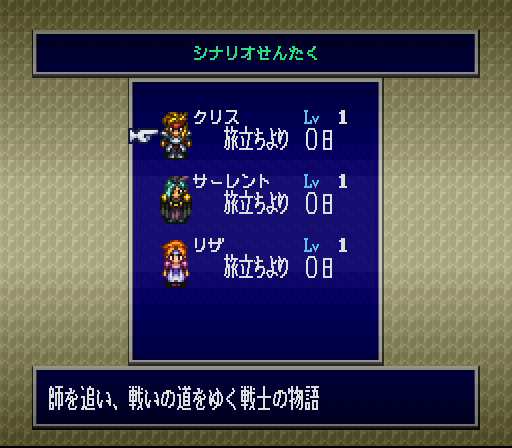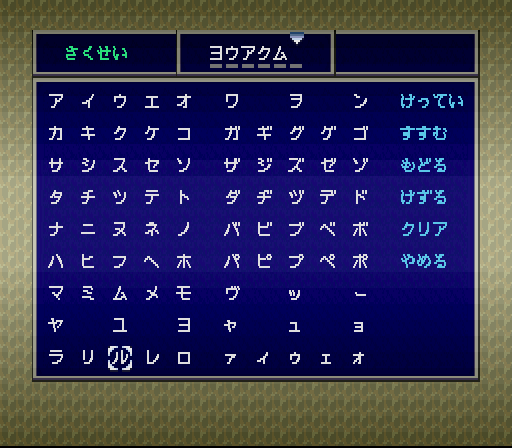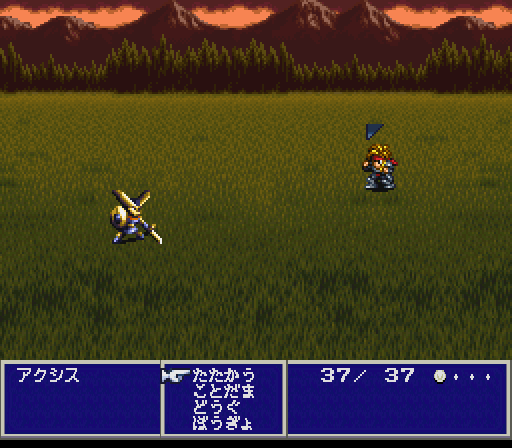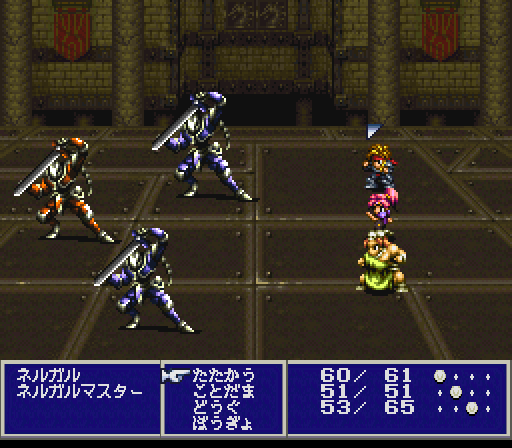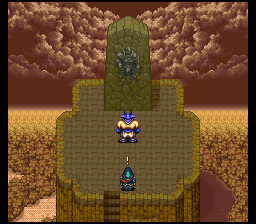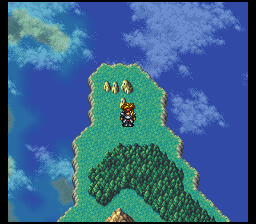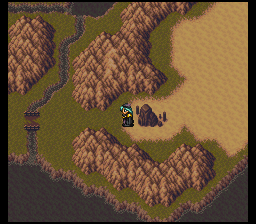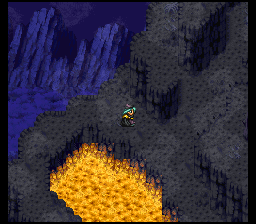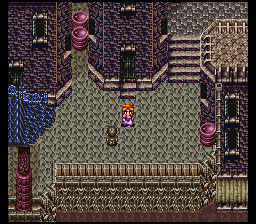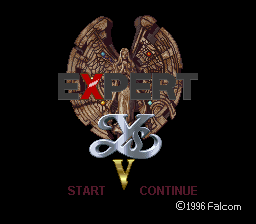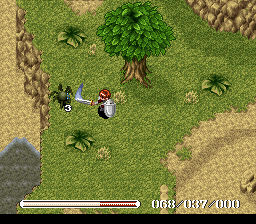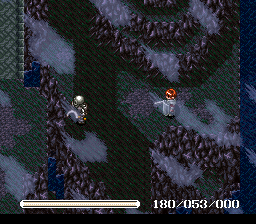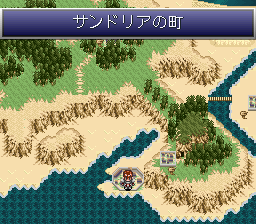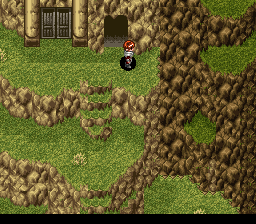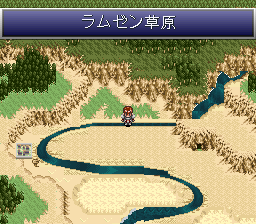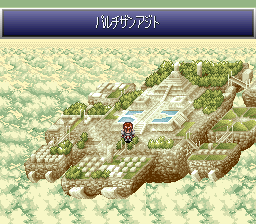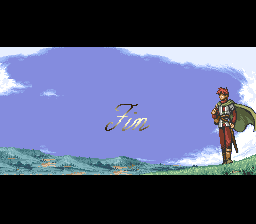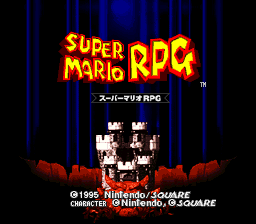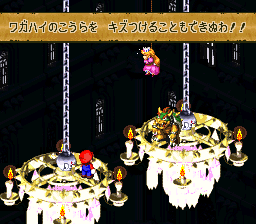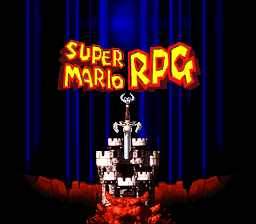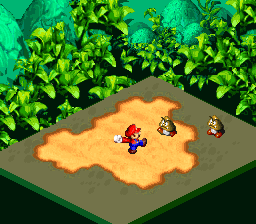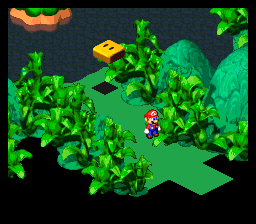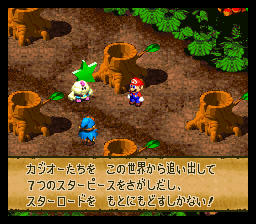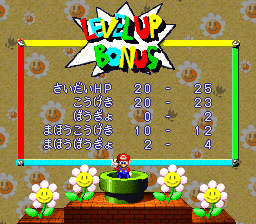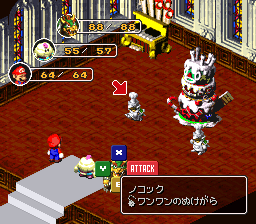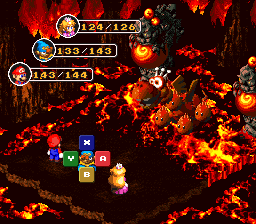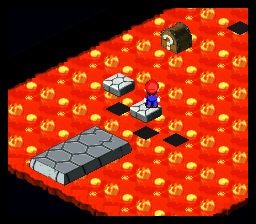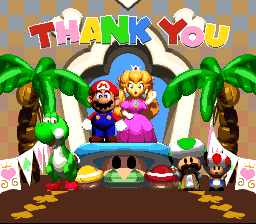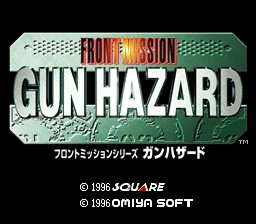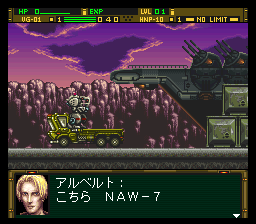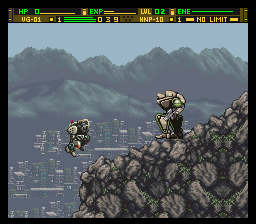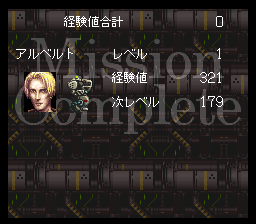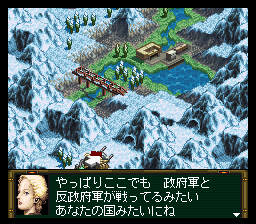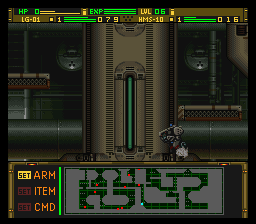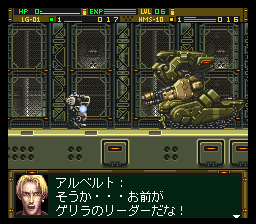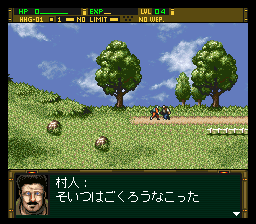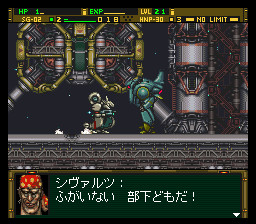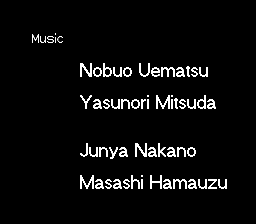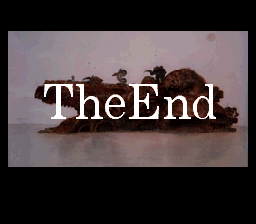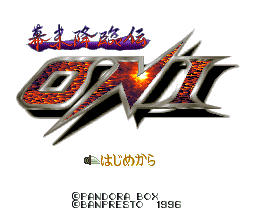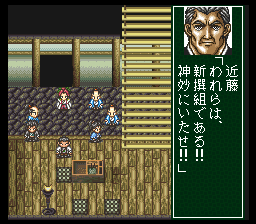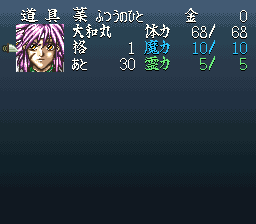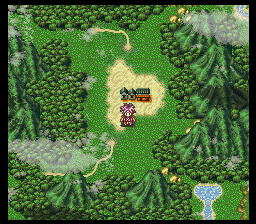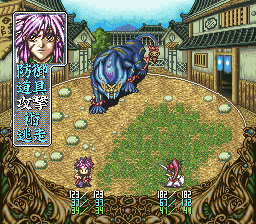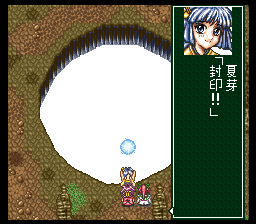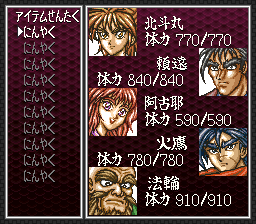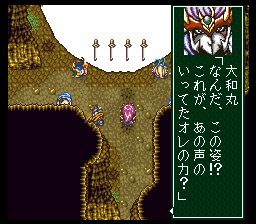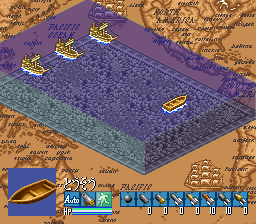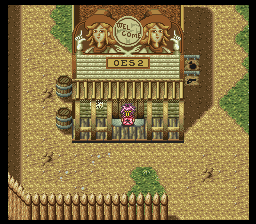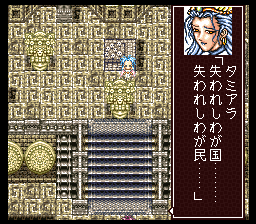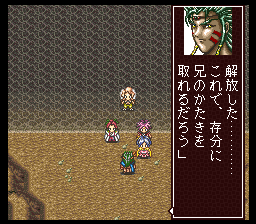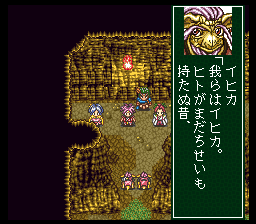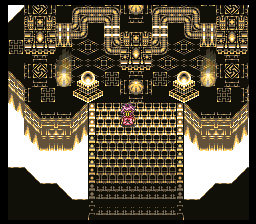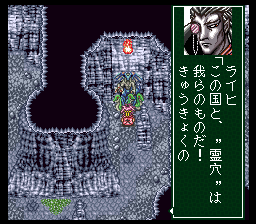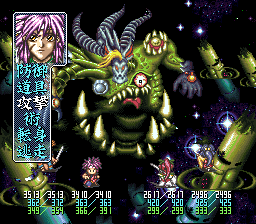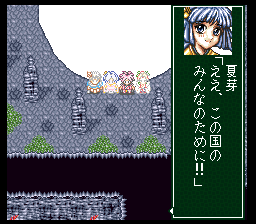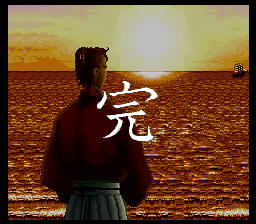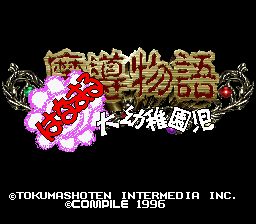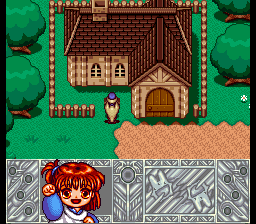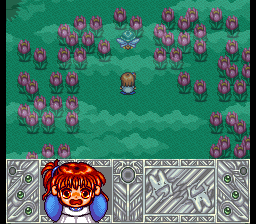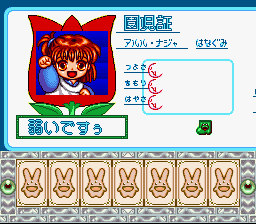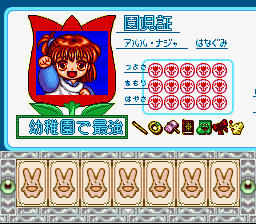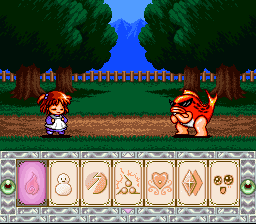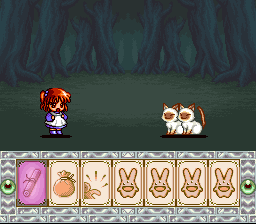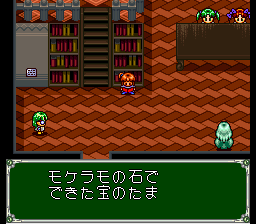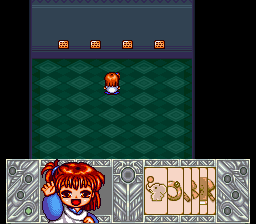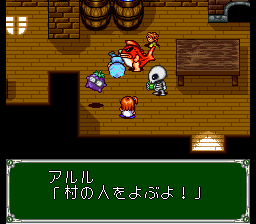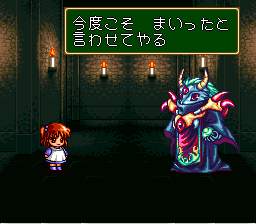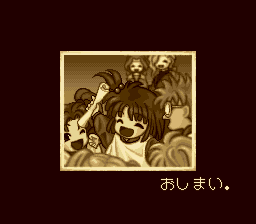Mahoujin Guruguru 2 (魔法陣グルグル2), released 4/12/1996, developed by Tamtam, published by Enix
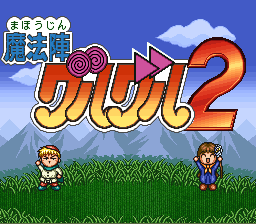
This is the followup to the first Guruguru game, released about a year later. In my post on the original game I gave some background on the series but I failed to notice that although the original manga had ended in 2003, there is a “Mahoujin Guruguru 2” that started in 2012 and is still running in the online version of Monthly Gangan.
The first game was only marginally an RPG; it had no real story and was based on randomly generated dungeons. This game is a full-fledged RPG though, essentially an unusual type of action RPG.
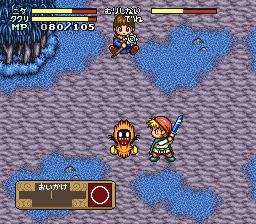
As in the first game, you only control Kukuri, while Nike automatically fights the monsters. However, this time the battles take place on the same map as the exploration. When the battle starts, Nike will face up against the enemy and try to attack. You can change AI settings for him but without the instruction manual I was never sure what they did. Meanwhile, Kukuri can run around the map and cast spells to support Nike or damage the enemy. The spellcasting is the same as in the first game and I can copy my comments from the post there:
“To cast a spell, you first choose one of four elements (wind, fire, life, water). Then you pick an area of effect, and then a style (like “powerful”). This makes a possible 64 combinations that result in 64 different spells. The idea is interesting but as with most games that offer this many spell choices, there are a few that are really powerful and the rest aren’t worth using.” In the 2nd game you get all of the effect/style/element factors by moving forward in the story. None of them are hidden or optional. I don’t remember if this was the case in the original, but here you also have to have Kukuri at a certain level to be able to cast each spell. It’s hard to keep track of what is what; I had to make a list of the useful spells in my notebook.
If there is more than one enemy in the area, the other enemies can attack Nike or Kukuri with spells or other moves. Kukuri can try to deal with those enemies on her own but for the most part she’s more effective helping Nike deal with the monster he’s fighting. Nike often is not all that effective; his attacks frequently miss and it takes him a long time to kill an enemy unless you are way above the enemy’s level.
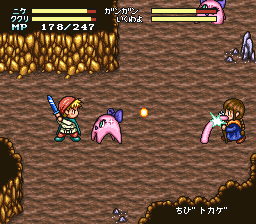
The game balance is problematic beyond what I just mentioned. There are bosses that will kill Kukuri in one hit from full HP even with the best equipment she can buy, meaning that there is no way to beat the boss other than levelling up. For the majority of the game, I found that if I was strong enough to reach the boss I was also strong enough to beat it, but there were a few times (the last boss in particular) where grinding was necessary. Fortunately there is a code where you can set the XP you get from a battle; if you set it too high it messes up but if you put it around 500 XP per battle you can quickly level up to wherever you need to be.
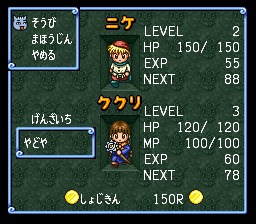
The plot is as usual mostly a parody of Dragon Quest-style RPGs; overall it’s pretty light and has only a few turns. According to the kusowiki description, the plot makes more sense and is more satisfying if you have read the manga.
The beginning of the game is actually the hardest part — you have to do a tutorial battle with only Nike and also one with only Kukuri. You can’t do any levelling or upgrades, you just have to beat the fights. The battle system is very unintuitive at first — I died so many times in these tutorial battles that I seriously thought of skipping the game entirely, but I watched a video where someone beat the Nike part just by holding down the attack button at the start of the fight, and while that didn’t work completely for me, it was enough to beat the boss. To beat the Kukuri fight you need to figure out how the initial spell works; it’s easy to hit yourself with it and at level 1 that does a huge amount of damage (of course you have no healing items).
Once you get past that the game is still a bit tricky until you level up a bit because you still have to be careful of hitting yourself or Nike with the fireball. Fortunately all but the very early spells autotarget the enemies so it’s not an issue after the first area.
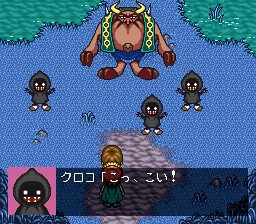
The game is entirely linear. You come to a new village and have to solve a problem there, then you automatically get moved on to the next village — you can revisit old areas with a flying shoes item, but the only reason you would want to do that is that grinding is easier in previous areas than in current ones.
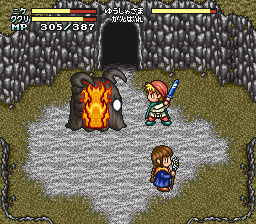
Basically you do the same thing in each area — fight the monsters in the area and find the treasure chests until you can reach the boss (and have the best equipment and a good stock of healing items), and then beat the boss. Level up if you can’t do it. If you die you lose half your money but keep everything else.
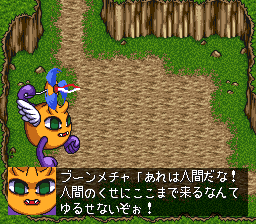
The hardest part for me other than the beginning was the Nekojita Valley because the healing items weren’t keeping up with Nike and Kukuri’s HP and I had not gotten the healing spell yet, so I basically had to grind until I was much more powerful than the enemies.
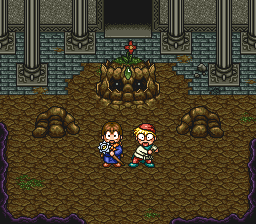
Eventually you get the glimmer of a story — in order to defeat Giri in the Underworld, Kukuri and Nike need the power of the four spirits. At the same time, they hear about another person from Kukuri’s clan who tried to get the power himself and sealed the spirits away.
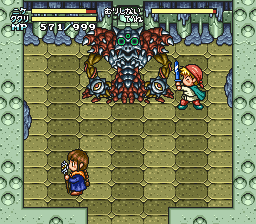
This turns out to be the final boss Rido, a failed guruguru user who tried to get the power to defeat Giri himself but realized he was too weak, and now decides to test the heroes to see if they can do it. Giri actually extends his power to corrupt Rido for the final boss; Kukuri has to be level 77 to survive his attack but once you’re there the battle itself is not too bad as long as you immediately heal Kukuri. For Kukuri I spammed the spell that makes Nike attack faster.
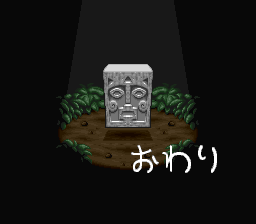
The ending is bizarre – Rido tells the heroes they are strong enough to go into the underworld and face Giri. First the heroes decide to go say goodbye to everyone, but then after that they decide the underworld sounds too scary and give up, and nobody knows what happened to them after that. I guess this fits with the comic tone of the series?
Overall this is an OK game. The system is unusual and original, but everything seems not quite fully polished, and the battles can be frustrating when enemies are spamming attacks that cancel Kukuri’s spells or when Nike can’t seem to hit at all. You can also switch screens and have Kukuri get stuck inside a monster and if you can’t manage to free yourself you can’t cast any spells. But this certainly is far from the worst game I’ve played and it’s better than Guruguru 1.
